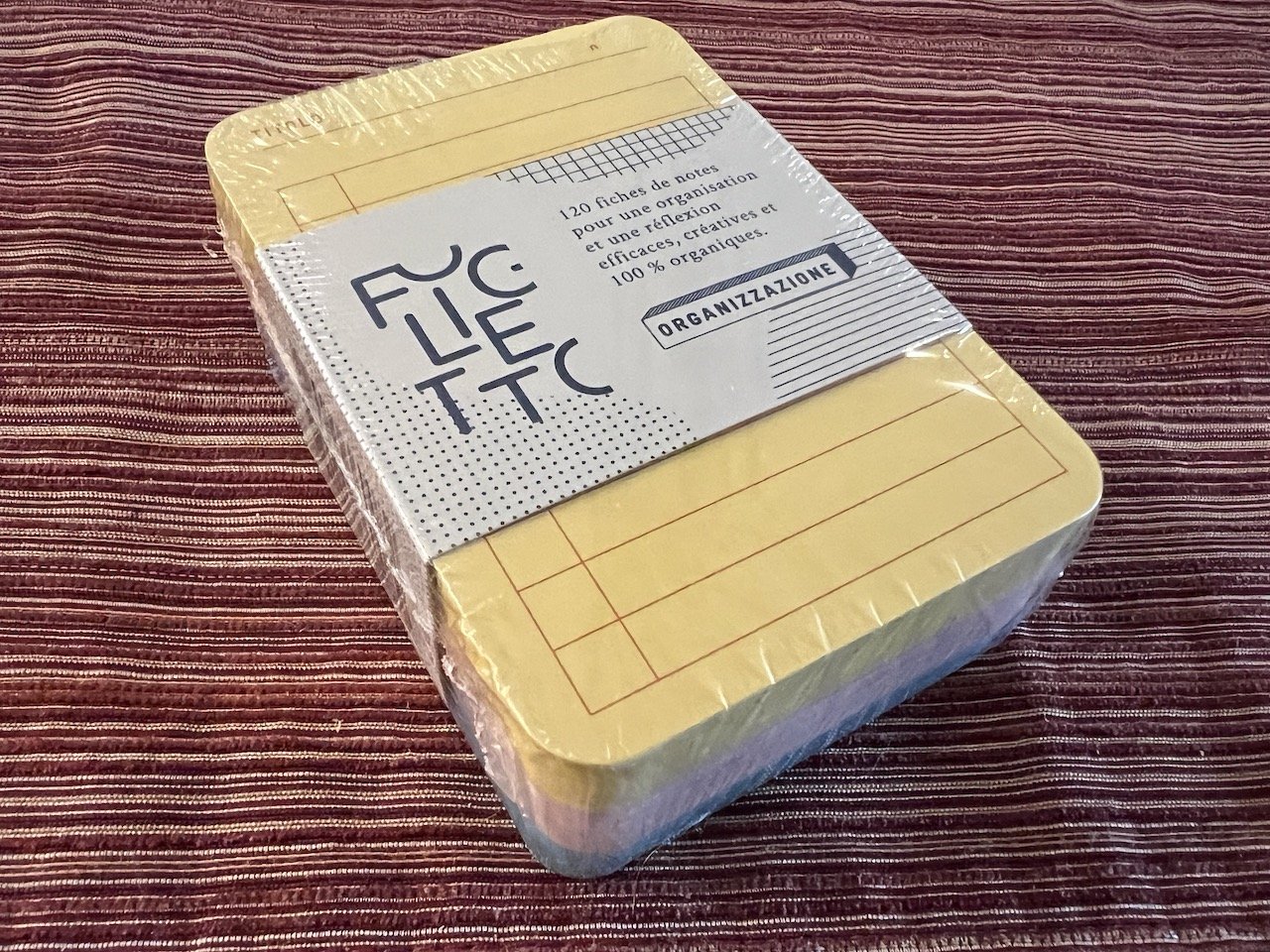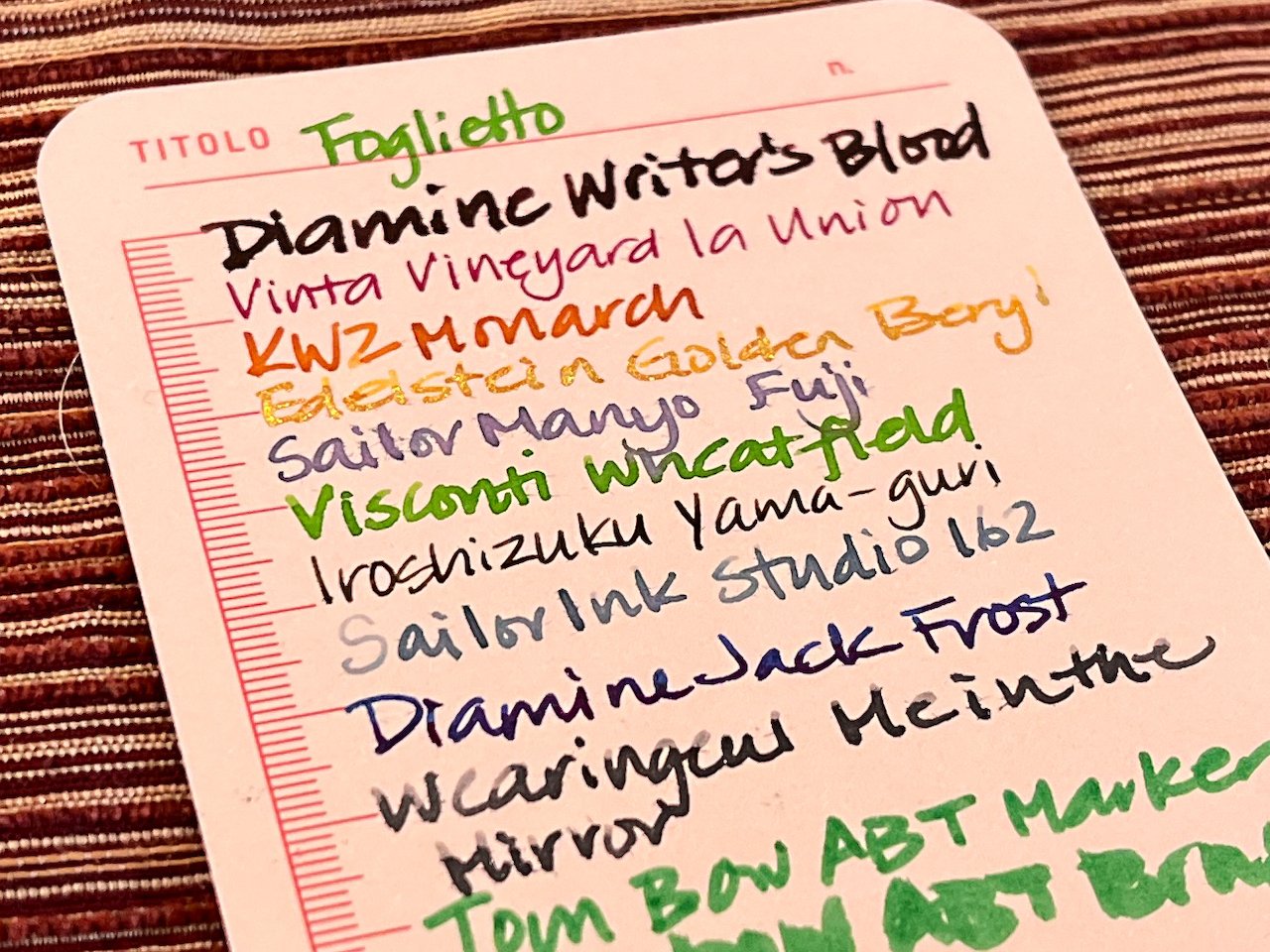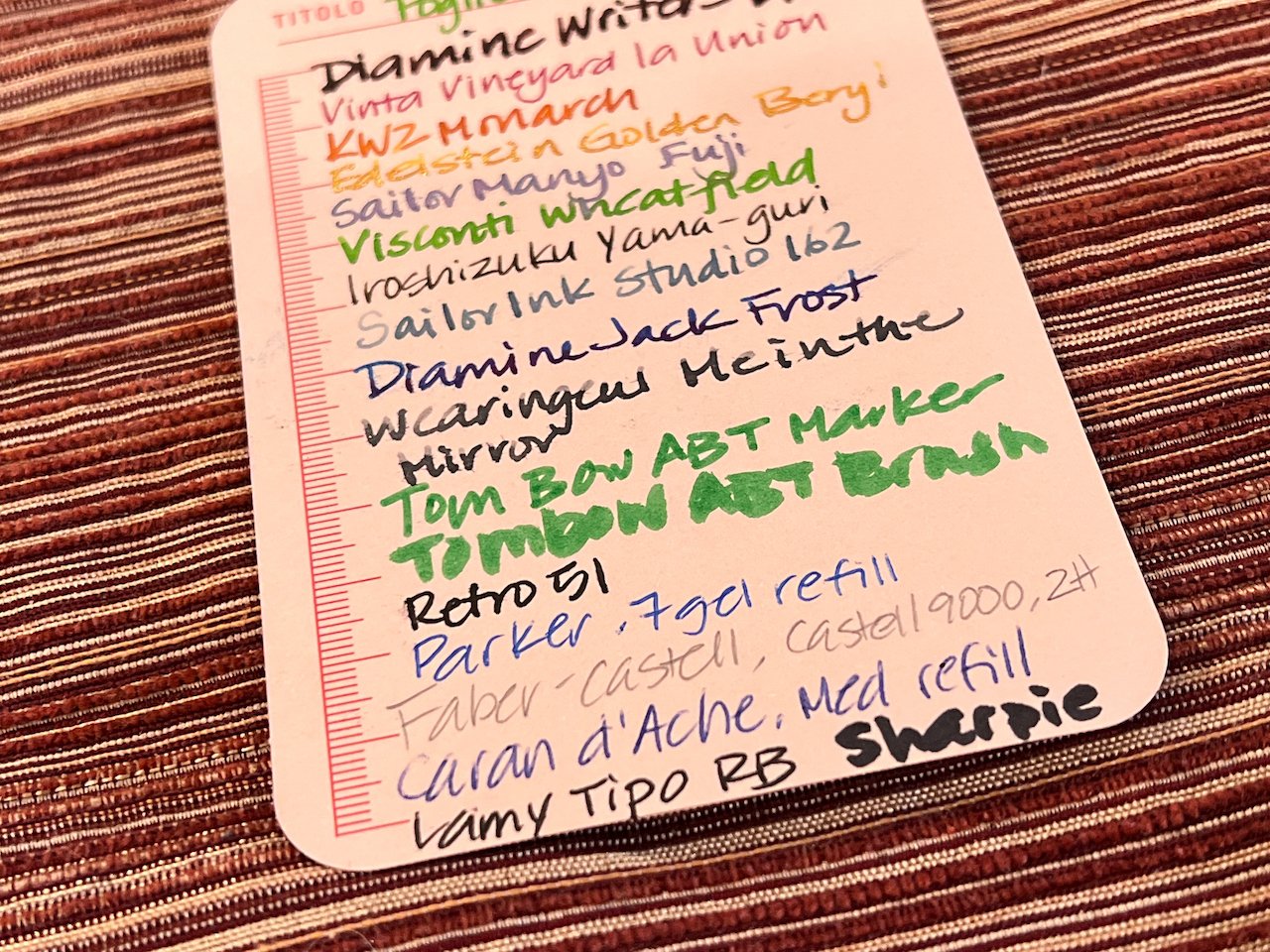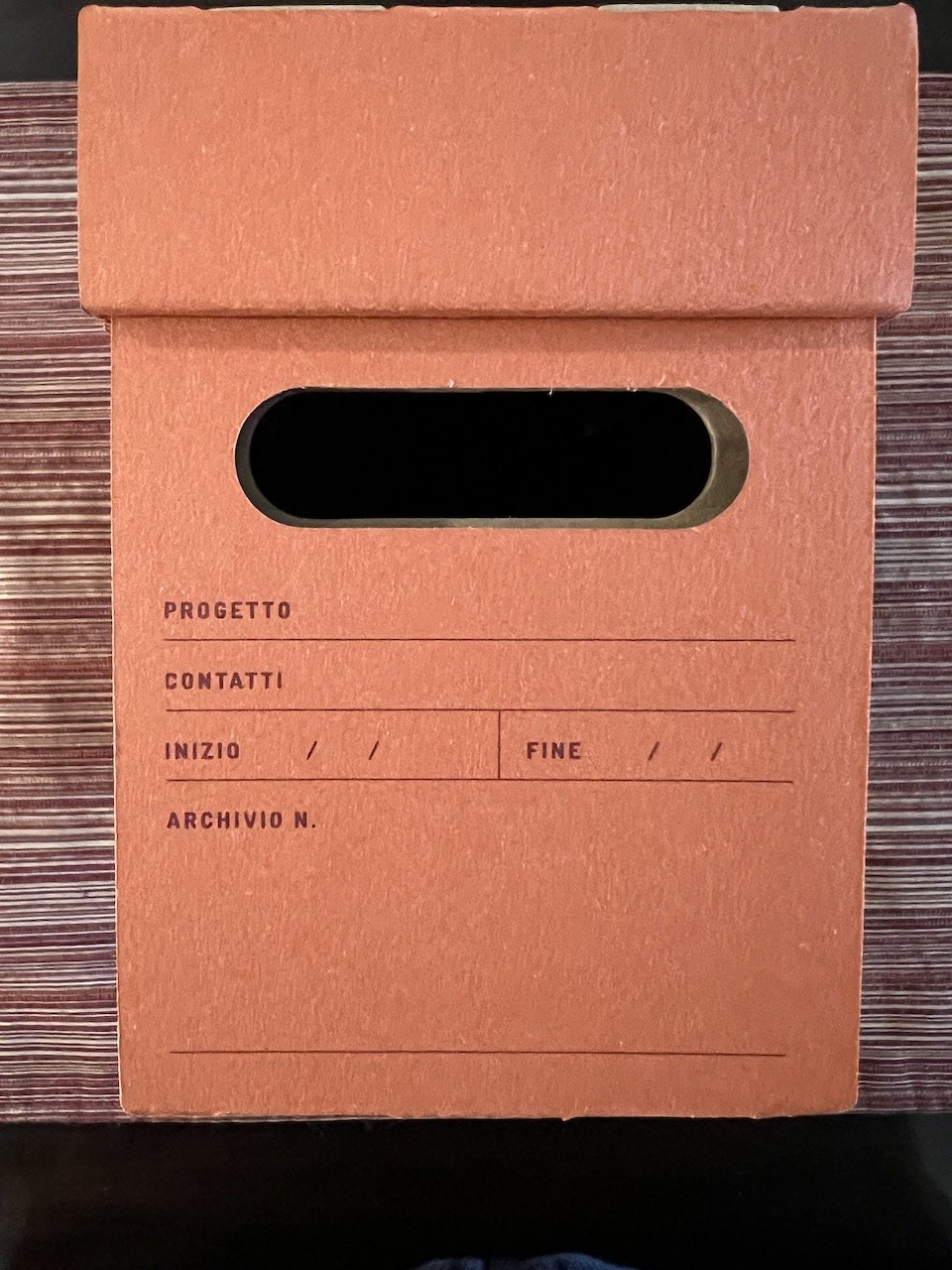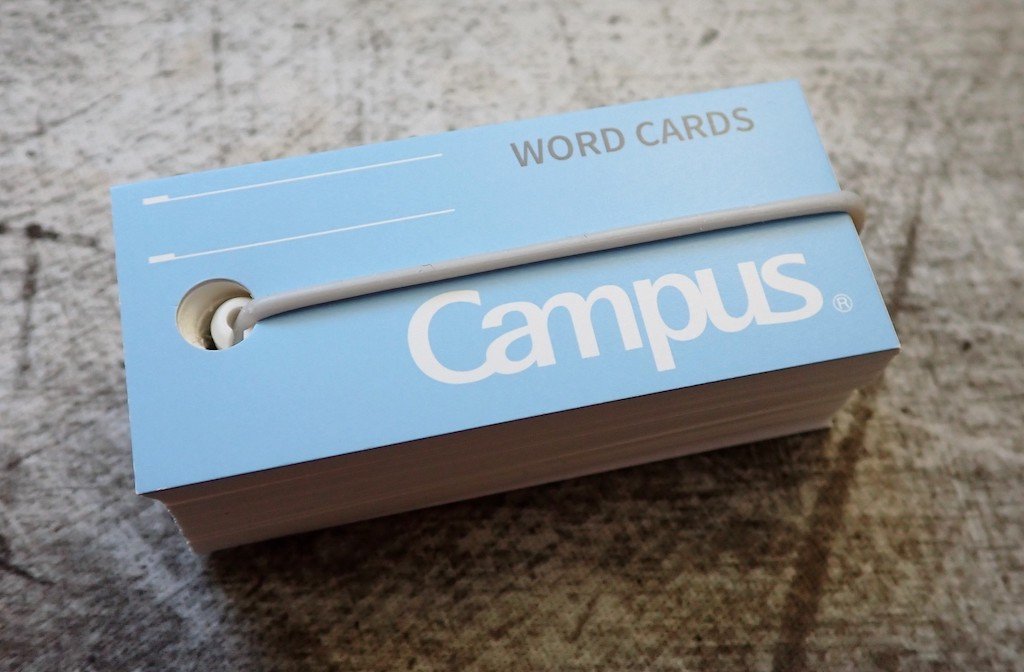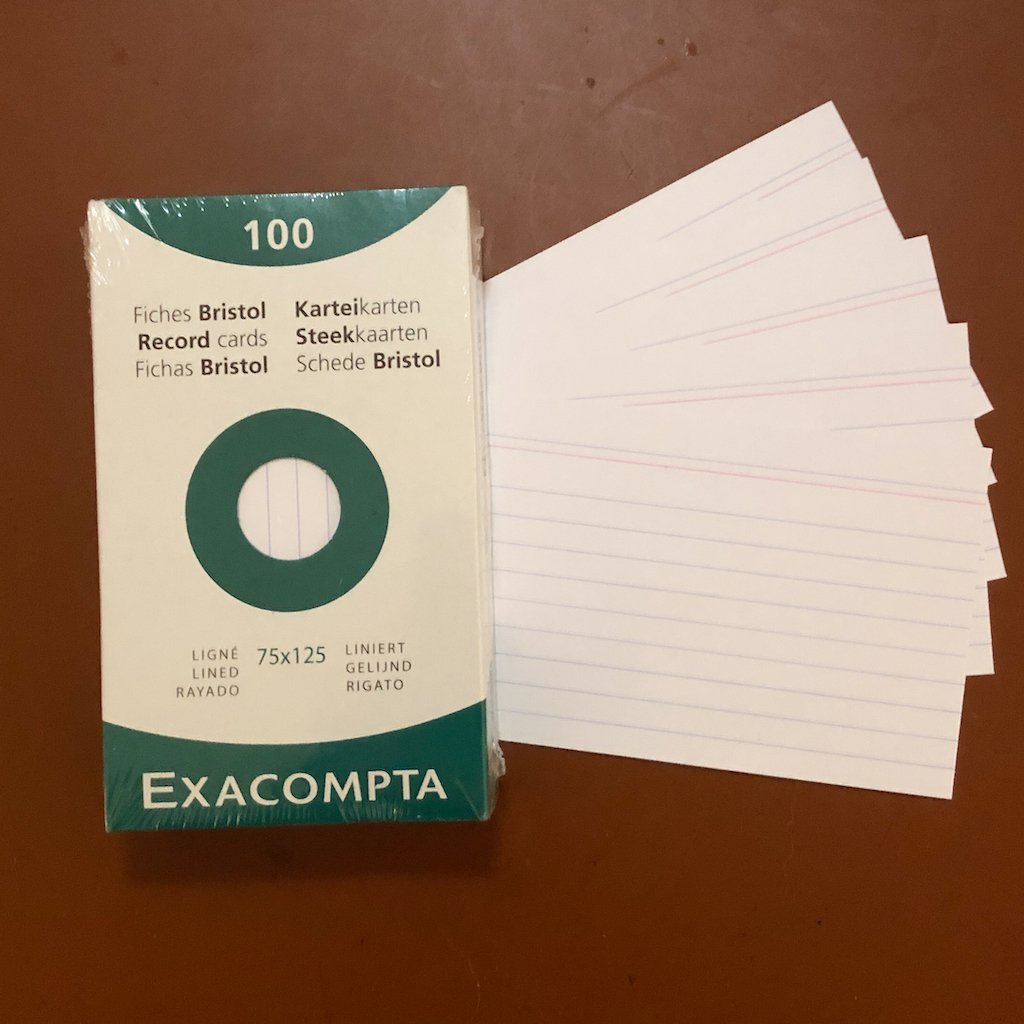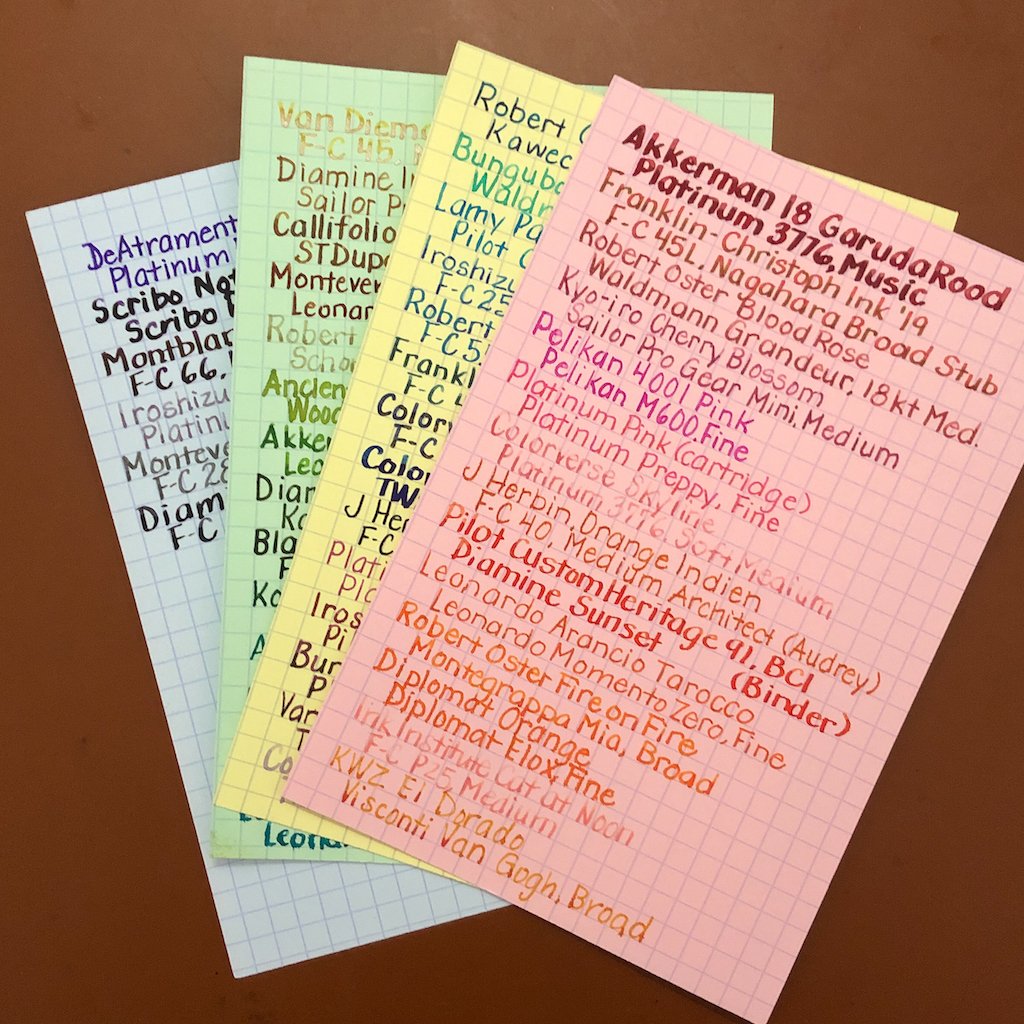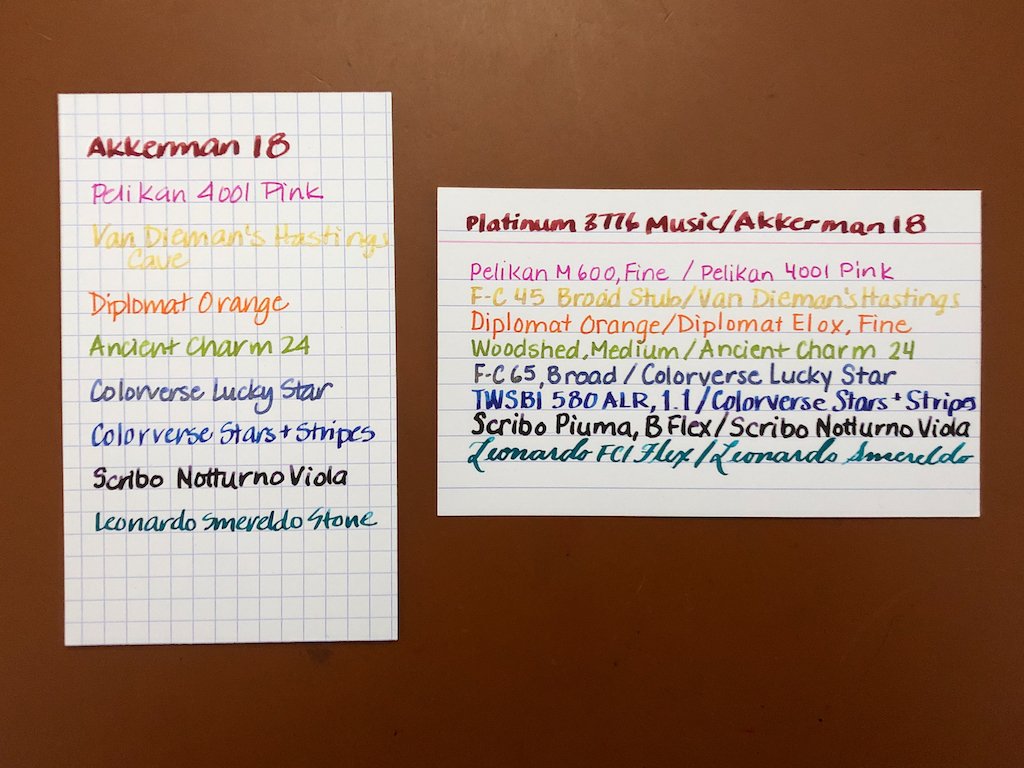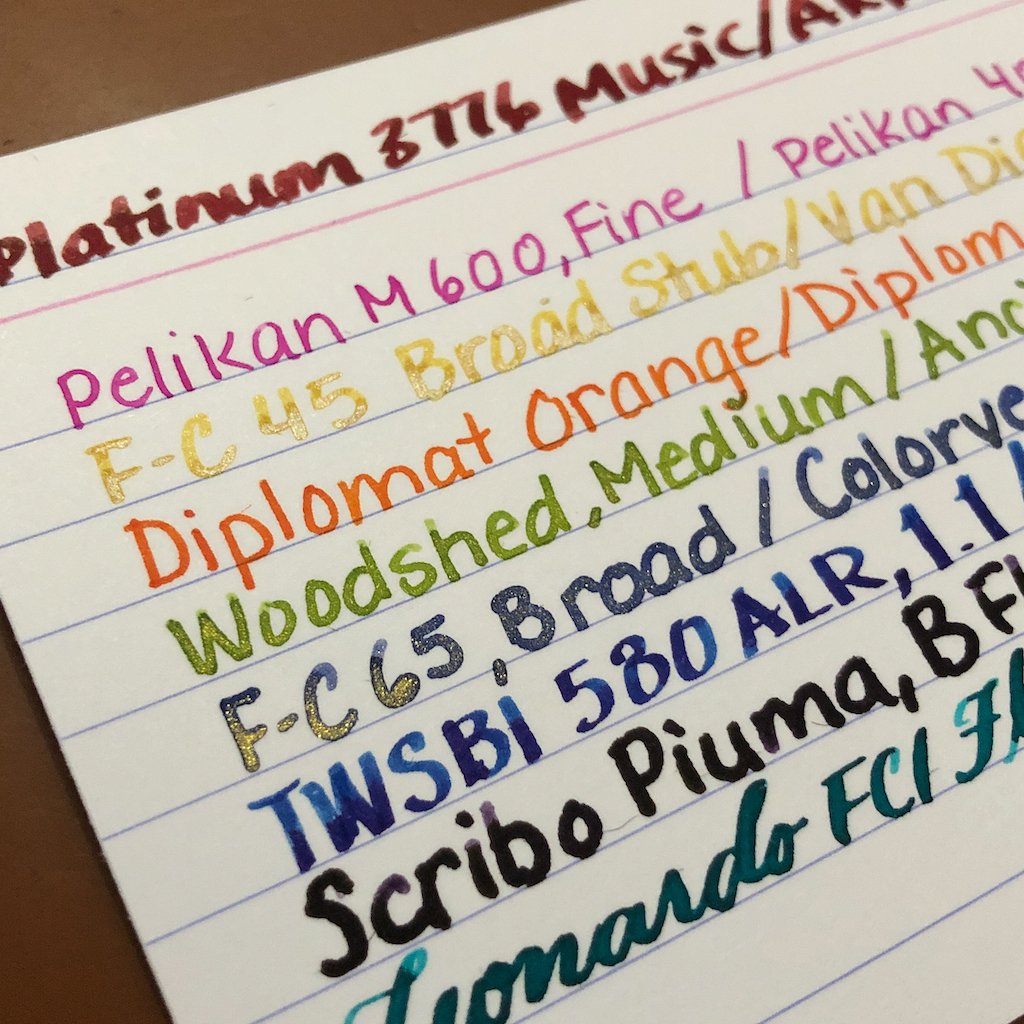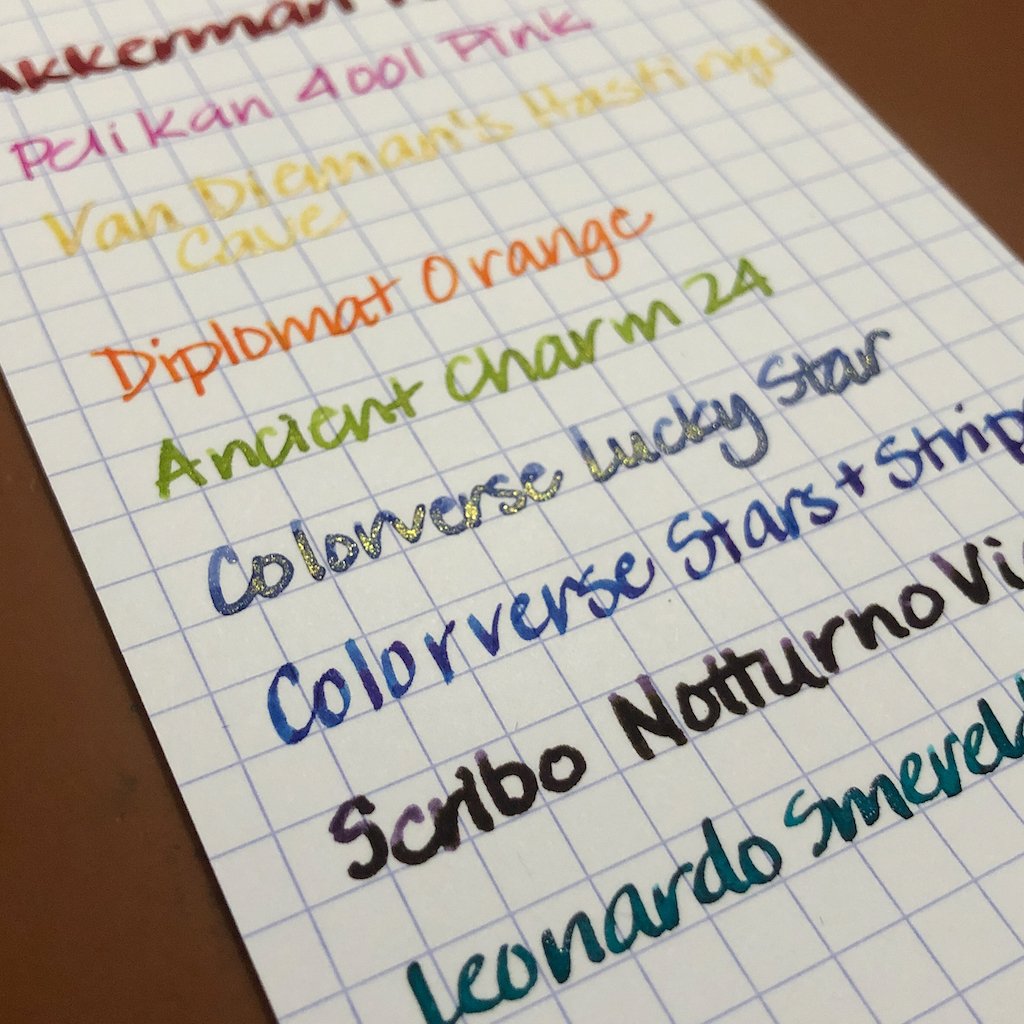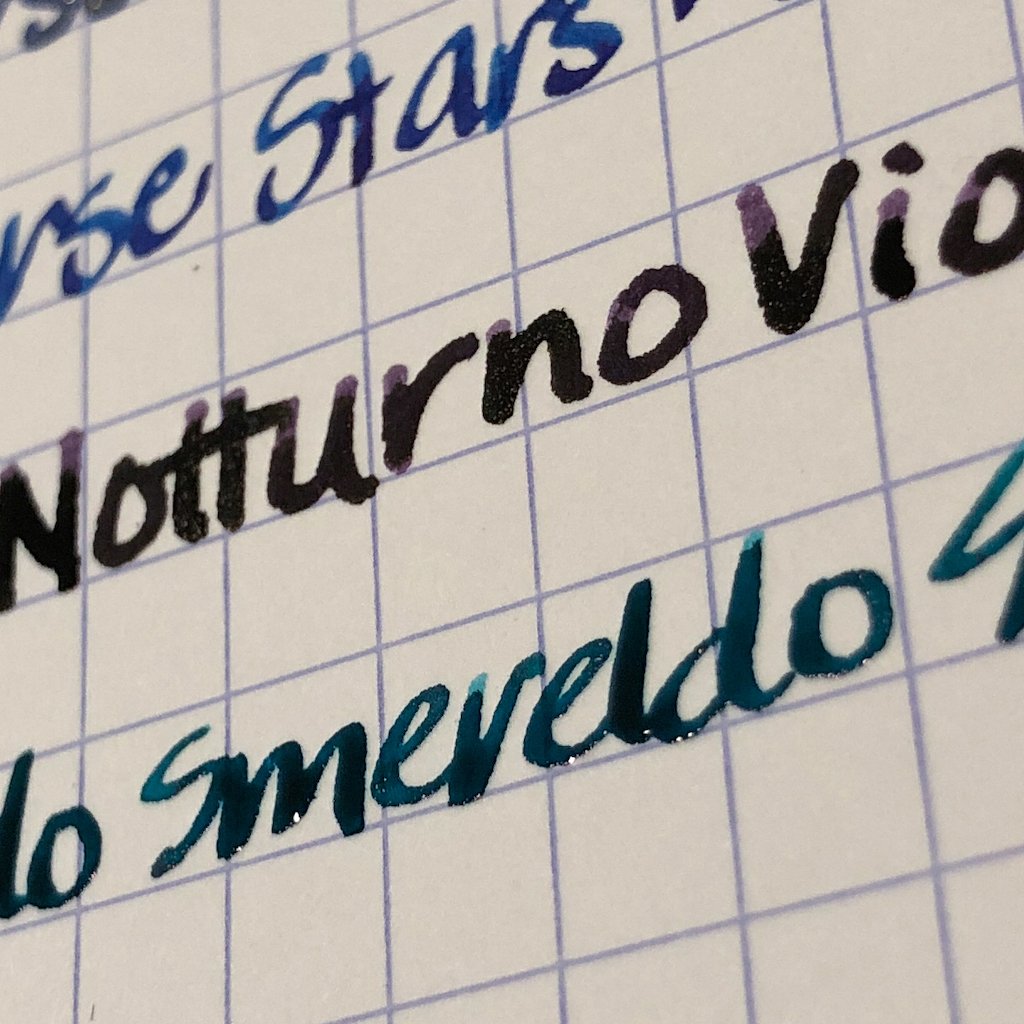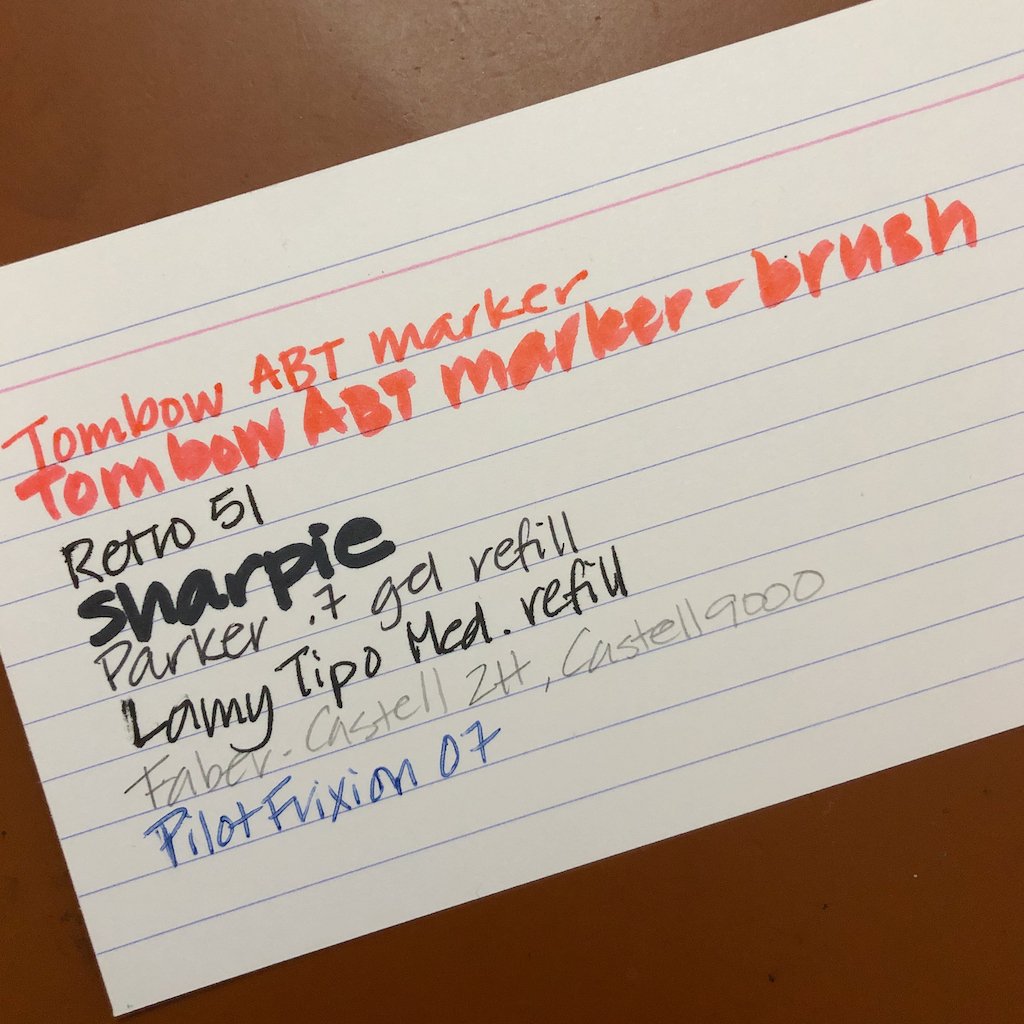(Kimberly (she/her) took the express train down the fountain pen/stationery rabbit hole and doesn't want to be rescued. She can be found on Instagram @allthehobbies because there really are many, many hobbies!.)
I saw these cool Foglietto Memo Cards on Brad’s Twitch stream a while back and bugged the Bossman to send these to me for review. Even though I’m not a big index card user, I’ve embarked on a mission, albeit a very slow one, to find fountain pen-friendly index cards since our beloved Nock Co. index cards aren’t available anymore (sniff sniff).
Despite its Italian name (Foglietto means leaflet in Italian), Foglietto is actually a French stationery company that started in 2019 and their products are now sold in many European countries as well as North America. Up for review today is a pack of the Foglietto A7 Memo Cards and the Archive Box in Terracotta.
Each pack of A7 note cards contains 120 cards (this pack has 40 each in yellow, pink, and blue). They also come in a variety of styles like dot grid, grid, to do, blank, mixed, etc. The pack I have is the Organizzazione (which means Organization in Italian). The tops of each of the cards says “Titolo” (Title) and each color has a different layout. The yellow card is a to-do list, pink is plain with metric measurements on the side/bottom and blue is dot grid.
The cards are 260 gsm so they have a nice heft to them; slightly thicker than the typical index card, thinner than a playing card. There is a slight texture to them which I noticed with my finer nibs (like the Sailor 21k Fine). Overall, the cards held up moderately well to fountain pens, though the notoriously wet Diamine Writers Blood feathered quite a bit. Shimmer and shading were pretty much unaffected but the sheen of Diamine Jack Frost was diminished on all the cards (and Rhodia too). I was surprised to see a little of the chromashading properties from Sailor Manyo Fuji, especially on the yellow card. There was also zero ghosting or bleedthrough, not even from a Sharpie.
It really did not like the wet Diamine Writers Blood, but look at the purple and blue shading of the Sailor Manyo Fuji!
Standard pens and markers did fine on the cards. Even the pencil was readable.
The pink held up to the Diamine Writers Blood better than the yellow.
My least favorite color card to write on was the blue because the colors are much flatter and my 2H pencil was almost impossible to read on it. While FP inks did pretty well, none of them had problems with other writing implements either. And while FPs are my preferred instrument of choice, I was surprised to find that I enjoyed using the Lamy Tipo and Retro 51 rollerballs the most on these cards.
I didn’t love the inks on the blue cards.
And the pencil is almost unreadable.
Color comparison against Rhodia 80 gsm DotPad.
The Archive Box is made from cardboard, measures 118mm x 80mm x 200mm (~4.75”x 3.5” x 8.5”) and stores about 4 packs of A7 note cards. It comes in other colors including grey and green and costs 10GBP (~$12 USD).
Different sides of the Archive Box.
It is a lightweight box; you can see where it was dinged from mild usage.
Pros:
- Fairly FP-friendly
- No ghosting or bleedthrough
- Good variety of card options
- Box is fairly sturdy for being lightweight
Cons:
- Finer nibs (especially anything finer than Japanese Medium) may catch on the cards
- Wetter inks will likely bleed
- Blue cards made ink colors look duller and pencil was harder to read
- Price is a bit steep for 120 cards (18GBP or ~$22USD). For context, a pack of 80 larger Hamelin cards costs ~$7 and a 100 pack of 5x3” index cards from Exacompta costs ~$4.
Neutral:
- Card sets seem to be sold in multi-colored packs. This may be good if you like a mix of colors or an annoyance if you only like or want certain colors.
Overall, these cards work well, and while they are pricey, they have a neat aesthetic to them, especially when paired with the Archive Box.
(Disclaimer: The Foglietto cards and archive box were purchased from Nero’s Notes at regular price for review. All other products used are my own.)

